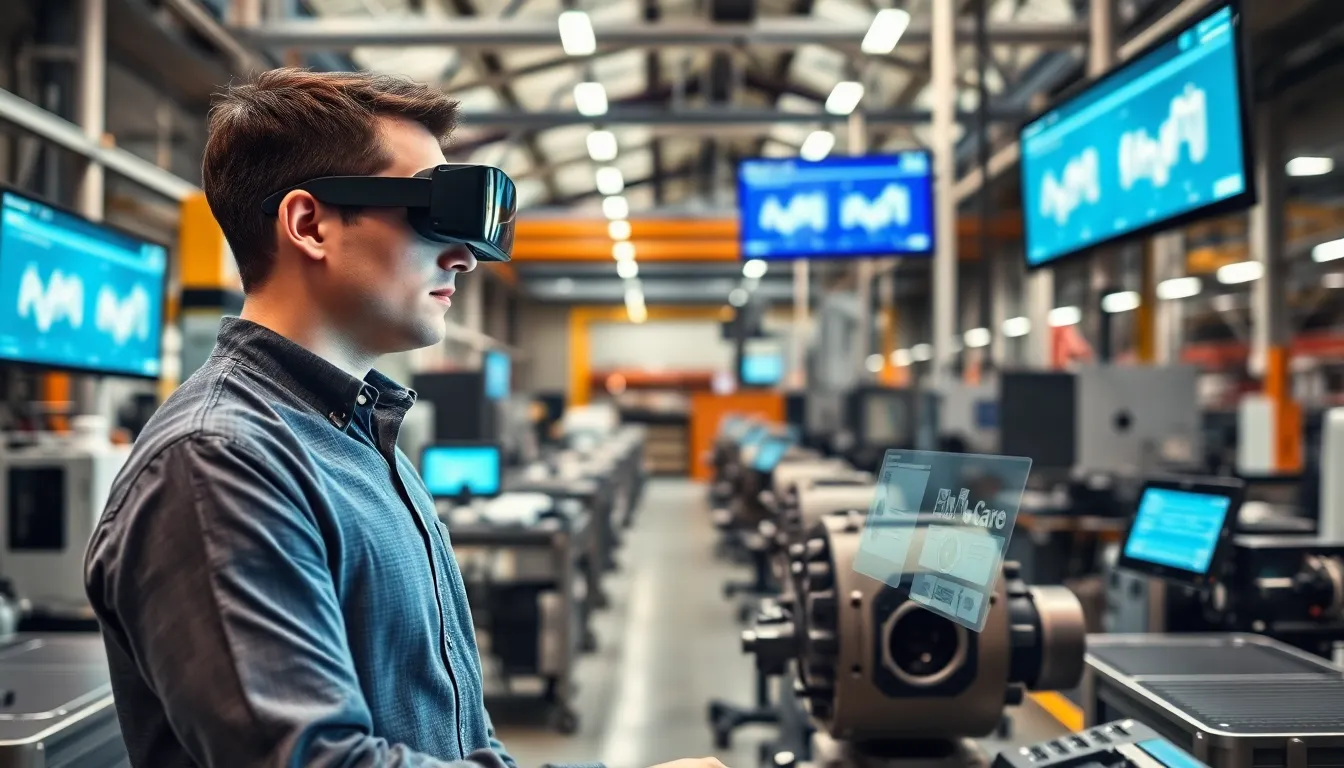Imagine this: you walk into a room full of complex machinery and detailed procedures, but instead of feeling overwhelmed, you’re greeted by a virtual assistant projecting clear, step-by-step instructions right before your eyes. That’s the magic of augmented reality (AR) work instructions, and they’re here to revolutionize the way we approach tasks in the workplace. Ready to jump into how AR can take your business operations from “meh” to “wow”? Let’s explore.
Table of Contents
ToggleUnderstanding Augmented Reality in the Workplace

Augmented reality overlays digital content onto the physical world, enhancing the way tasks are performed. Through devices like AR glasses or smartphone applications, users can access information seamlessly integrated with their environment. This tech is no longer just a futuristic dream, it’s actively being utilized across industries, from manufacturing to healthcare. With the capacity to visualize complex data in real-time, AR is reshaping how employees engage with their tasks, allowing for a more dynamic and interactive workspace.
Benefits of Augmented Reality Work Instructions
Integrating augmented reality into work instructions brings a bounty of advantages. Let’s break these down further.
How Augmented Reality Work Instructions Enhance Training
Training can be a challenging job, often bogged down by lengthy manuals and tedious videos. AR work instructions offer a refreshing alternative. Trainees can visualize concepts in 3D, making learning more intuitive and engaging. Imagine learning to assemble a complicated machine with virtual guides pointing exactly where each part goes, it’s much easier than memorizing diagrams or flipping through pages.
Increasing Efficiency and Reducing Errors
AR significantly reduces the likelihood of human error. Studies show that teams using AR report fewer mistakes and faster task completion times. By providing real-time feedback and instantaneous access to data, employees can correct errors before they happen, safeguarding productivity and quality.
Implementing Augmented Reality Work Instructions
While the benefits are clear, successful implementation requires strategic planning.
Key Technologies Behind Augmented Reality Work Instructions
To harness the power of AR, one must consider key technologies like software development kits (SDKs), augmented reality browsers, and 3D modeling tools. Companies like Microsoft HoloLens and Google ARCore provide robust platforms that enable developers to create immersive AR experiences tailored to specific needs.
Best Practices for Creating Effective AR Work Instructions
Creating AR work instructions isn’t just about flashy graphics. It’s essential to maintain clarity and usability. Here are some best practices:
- Keep instructions concise and focused.
- Test AR prototypes with real users for genuine feedback.
- Make sure content is easily updatable for future needs.
Case Studies: Successful Implementation of AR Work Instructions
Several companies stand out for their innovative use of AR work instructions.
- Boeing: The aerospace giant adopted AR for wiring assembly, resulting in a 90% reduction in rework and a significant increase in productivity.
- General Electric (GE): With AR, GE transformed maintenance procedures, allowing technicians to visualize parts and receive live feedback, streamlining their workflows. These examples demonstrate that investing in AR is not just a trend but a savvy business strategy.
Challenges in Implementing Augmented Reality Work Instructions
Even though the advantages, AR implementation isn’t without its hurdles.
The initial investment in technology can be substantial, and integrating AR with existing systems may prove complex. Also, there’s the challenge of ensuring staff are adequately trained on new tools. Resistance to change is a natural human reaction, and overcoming it requires a clear demonstration of AR’s benefits through effective communication and training programs.
The Future of Work with Augmented Reality
The future is bright for augmented reality in the workplace. As technology advances, AR will become more accessible and affordable, opening doors for widespread adoption. Imagine a world where new hires are onboarded through AR simulations or where routine tasks are performed with an invisible guide helping every step of the way. This evolution could lead to an era of unprecedented productivity and efficiency.





